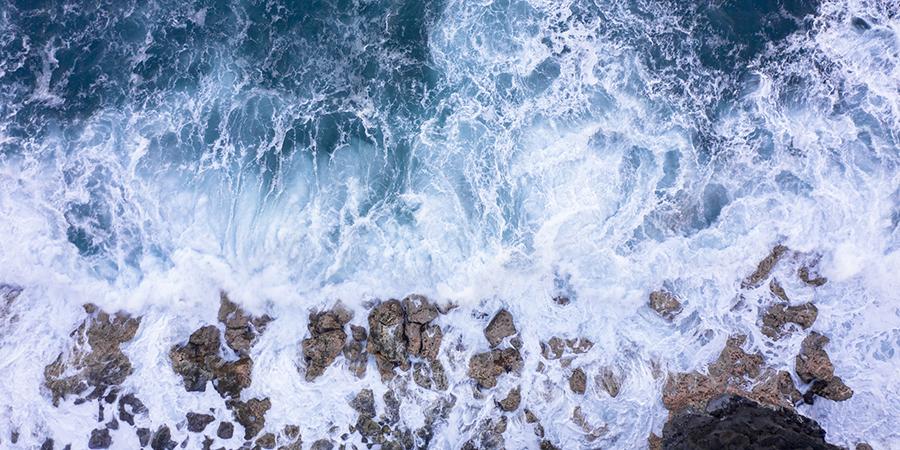- About
- Admissions
- Study at AUS
- Prospective Students
- Bachelor's Degrees
- Master's Degrees
- Doctoral Degrees
- Admission Publications
- International Students
- Contact Admissions
- Grants and Scholarships
- Sponsorship Liaison Services
- Testing Center
- New Undergraduate Student Guide
- Undergraduate Orientation
- New Graduate Student Guide
- Graduate Orientation
- File Completion
- Payment Guide
- Students with Disabilities
- Executive and Continuing Education
- Academics
- Life at AUS
- Research
- Publications
- Contact Us
- Apply Now
- .

AUS study notes potential impact of changing wave patterns on the Arabian Gulf coastline
Environmental changes have been a major factor impacting the preparation and design of development and construction plans around the world. The Arabian Gulf is no different. A recent study conducted by scientists at American University of Sharjah (AUS) shows that the Arabian Gulf has undergone rapid changes over the past four decades, with noticeable increase in wave heights.
Like other coastal countries facing such conditions, the trend of increasing wave energy should be taken into account when preparing coastal management and development plans, safeguarding the population and infrastructure, said Filipe Vieira, Visiting Scholar in the Department of Biology, Chemistry and Environmental Sciences, at AUS’ College of Arts and Sciences, and research lead.
He noted that it is possible to identify coastal areas that may be at risk if these trends continue, and adequate management strategies can be developed. “We cannot build massive structures to protect our coasts. It is not economically, socially or environmentally feasible. The best way is to plan and adapt for the future. This is a global reality,” he said.
Vieira added that new coastal developments—whether for residential, commercial or other uses—could be built in such a way that they offer a coastal protection function. He also proposed thinking about the creation of more resilient structures that could easily be modified to cope with unexpected changes in future wave and water-level conditions.
“This significant topic is intrinsically associated with climate change concerns. We know that the sea level is rising due to global warming, but there is limited information about wave conditions in the Gulf. Waves are perhaps more important than sea level when it comes to coastal erosion, flooding and damage to coastal structures.,” said Vieira.
The study found that wave heights have been increasing, particularly during storm conditions, over the past 40 years.
“In the Southern Gulf region, for example, and during storm conditions, the significant wave heights averaged 2.5 meters around early 1980s. We found a mean increasing trend in this area of 0.4 cm/year. It may not seem much, but at this rate, waves can reach average heights of approximately 3.0 meters by the end of the century, which may have serious impacts on the coastline. Higher waves have more potential to move sand from the beach to deeper waters, reach higher grounds and cause damage to coastal protection structures,” said Vieira.
He added: “Since there are uncertainties in long-term estimates, monitoring wave conditions is important to improve the accuracy of these estimates. The continuous monitoring of wave conditions will also enable us to get a better idea about the wave climate in the future and can be used for comparisons with results from numerical models. It is critical to continuously update the estimates presented in this study.”
He noted that information gained from this study could be used to develop a coastal management plan that includes a vulnerability index for the entire coastline, taking into consideration human factors such as population density and critical infrastructure, and physical parameters such as coastal morphology and geology, wave and water-level conditions. This would help identify areas at higher risk of erosion and flooding, according to their relative importance.
The study used state-of-the-art numerical models to generate and propagate waves. The models were compared against in-situ and satellite measurements to ensure the wave conditions were adequately reproduced by the models. The main challenge, however, was the lack of offshore wave data for verification of the models, thus the researcher used some measurements that Dr. Geórgenes Cavalcante, Research Fellow of Environmental Sciences at the AUS College of Arts and Sciences, had collected in the past, along with publicly available satellite information. AUS faculty members Dr. Cavalcante and Dr. Edmo Campos, along with Dr. Francisco Taveira-Pinto from the University of Porto in Portugal, assisted Vieira in analyzing the research results.
While this study focused on the Arabian Gulf region, the East coast of the UAE is frequently hit by cyclonic waves, which have a different behavior. The same team of researchers is currently researching the cyclonic- generated waves in the Gulf of Oman for a study that will be published soon.

